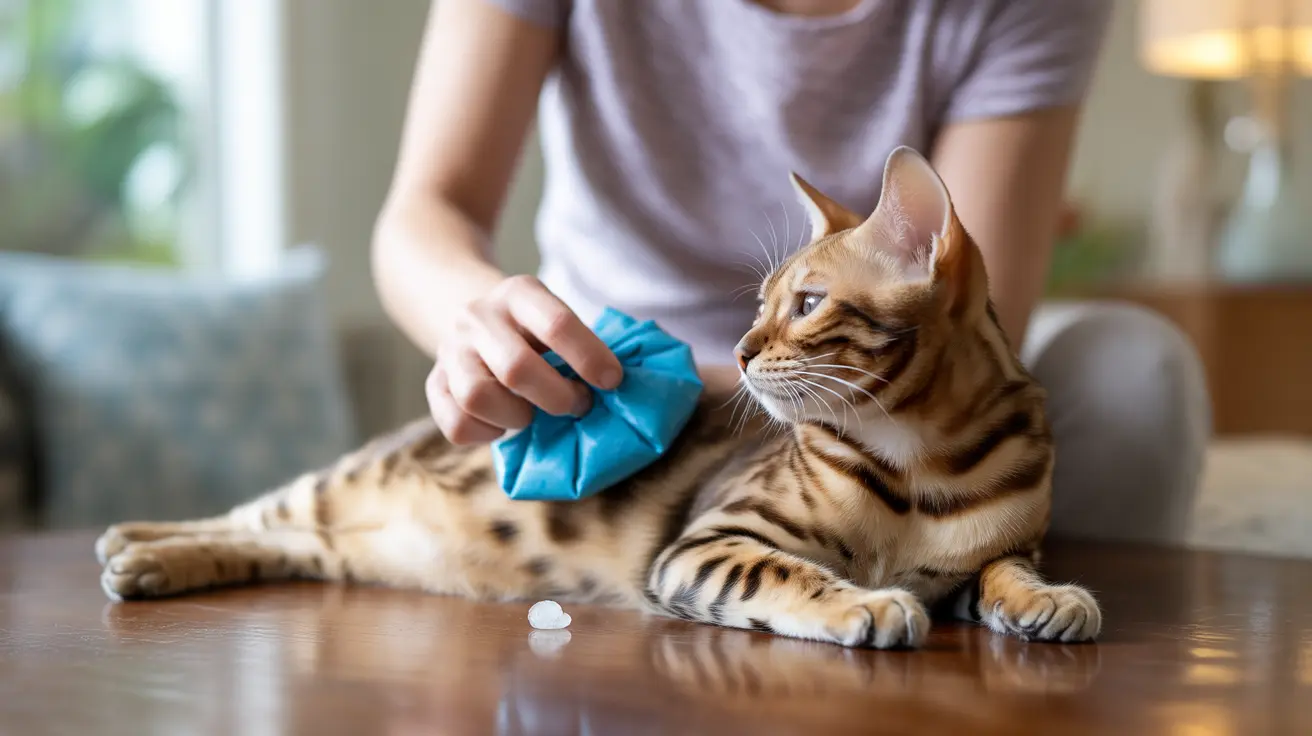Finding candle wax in your cat's fur can be alarming, but with the right approach, you can safely remove it without causing stress or injury to your pet. This comprehensive guide will walk you through proven methods for removing wax from cat fur while keeping your feline friend comfortable and safe throughout the process.
Initial Steps for Wax Removal
When you discover wax in your cat's fur, your first priority should be to remain calm. Cats are highly sensitive to their owner's emotions, and a peaceful approach will help keep your pet relaxed during the removal process.
Assessing the Situation
- The amount and location of the wax
- Whether the wax has completely hardened
- Any signs of skin irritation or burns
- Your cat's comfort level and behavior
The Ice Method: Your First Line of Defense
The most effective initial approach is to solidify the wax completely. Apply an ice pack or wrapped ice cubes to the affected area for 3-5 minutes. This makes the wax brittle and easier to remove while minimizing damage to the fur.
Breaking Down and Removing Hardened Wax
- Use a credit card or dull butter knife to gently scrape away larger pieces
- Break off smaller bits with your fingers
- Work slowly and deliberately to avoid pulling on the fur
- Take breaks if your cat becomes agitated
Using Natural Oils for Stubborn Wax
For persistent wax residue, natural oils can be incredibly effective. Choose from:
- Coconut oil
- Olive oil
- Mineral oil
Gently massage the oil into the affected fur, allowing it to penetrate and soften the wax. After a few minutes, use a soft cloth to wipe away the loosened wax. Always ensure any oil residue is thoroughly cleaned afterward to prevent skin irritation.
Professional Solutions and When to Seek Help
Sometimes, professional intervention is necessary, particularly when:
- The wax covers a large area
- It's near sensitive areas like eyes or ears
- Your cat is extremely uncooperative
- Initial removal attempts haven't been successful
A professional groomer or veterinarian has the tools and expertise to safely remove stubborn wax, even if it requires sedation in extreme cases.
Prevention Tips for Future Safety
The best way to handle wax accidents is to prevent them entirely:
- Keep candles out of reach of curious cats
- Consider switching to LED candles
- Use reed diffusers instead of wax warmers
- Never leave burning candles unattended
- Create designated pet-free zones for candle use
Frequently Asked Questions
What is the safest way to remove candle wax from my cat's fur without hurting them?
The safest method is to first harden the wax with ice, then gently break it off in pieces. Work slowly and carefully, using a credit card or dull edge to scrape away hardened wax. Stop immediately if your cat shows signs of distress.
How can I use ice and oils to effectively get wax out of my cat's fur?
Start by applying ice to harden the wax completely. Once brittle, remove as much as possible manually. For remaining residue, apply a pet-safe oil like coconut or olive oil, massage it in gently, then wipe away with a soft cloth.
When should I consider trimming my cat's fur or seeking professional help to remove wax?
Consider professional help if the wax is near sensitive areas, covers a large area, or if your cat becomes extremely stressed during home removal attempts. Trimming should be a last resort and is best done by a professional groomer.
Are there any household products I should avoid using when trying to clean wax from a cat's coat?
Avoid using chemical solvents, hot water, hair dryers, or any cleaning products not specifically designed for pets. These can cause skin irritation or burns and may be toxic if ingested during grooming.
How can I prevent my cat from getting candle wax on their fur in the first place?
Keep candles in secure locations away from curious cats, use flameless alternatives like LED candles, and never leave burning candles unattended. Consider creating pet-free zones for candle use in your home.
Final Thoughts
While finding wax in your cat's fur can be concerning, remaining calm and following these safe removal methods will help resolve the situation effectively. Remember to always prioritize your cat's comfort and safety, and don't hesitate to seek professional help when needed.






